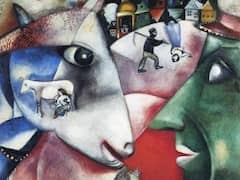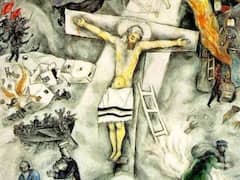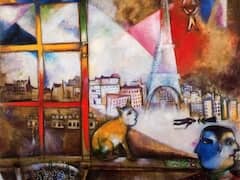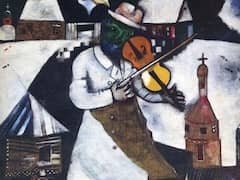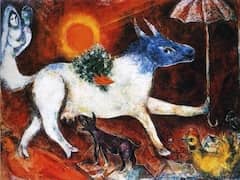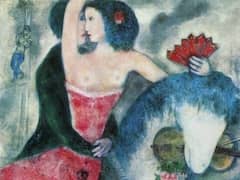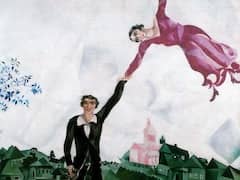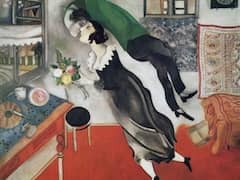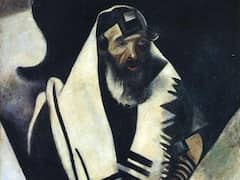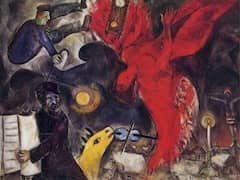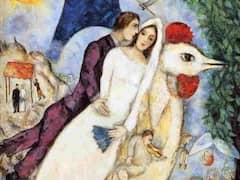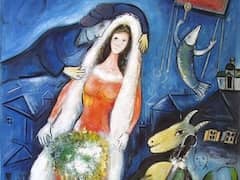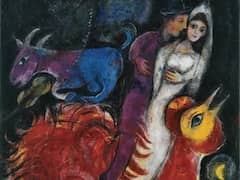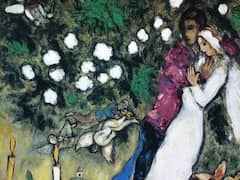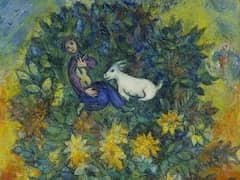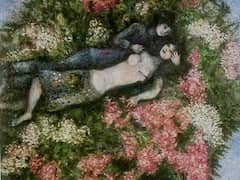The Magician - by Marc Chagall
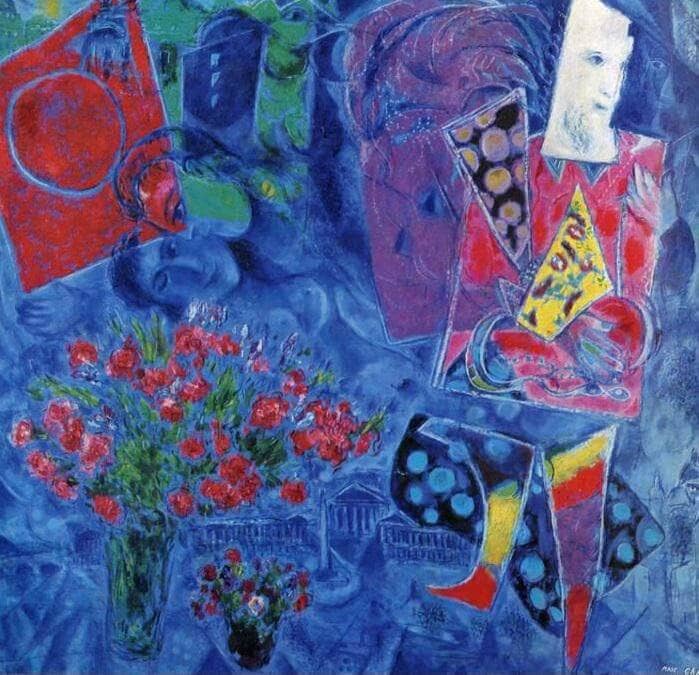
On an almost monochrome ground, prismatically fragmented and faceted like a crystal, the picture shows a panoramic view of Paris, with the Seine bridges, the Place de la Concorde and the Madeleine, Sacre Coeur, and the Eiffel Tower; at the upper left is the Opera, which Chagall has particularly liked to include in his pictures since he painted the panels for its enormous ceiling in 1964. In the middle, embedded in nocturnal blue, lies a loving couple. But this peaceful world is disrupted by an unusual performance, glittering in many colors, which provokes the appearance of a new and unexpected figure. On the blue ground Chagall has painted sharply outlined bright-colored areas, which look as if they had been cut out with scissors, comparable to papiers decoupes. Out of these "color cut-outs" he has constructed on the right an odd figure, quite alien to the familiar Chagallian iconography. Palette-like shapes associated with the figure seem to indicate the painter, but various other strange instruments, together with the bearded, gleaming-white prophet's head, suggest a different meaning. Here the magician takes the stage - as the principal figure, stepping out in front of the ensemble. There is a deep-red quadrangle on the left to ensure a balanced arrangement of color, and two bright bunches of flowers to counterbalance the diagonal color trend.
Through this artistic manipulation an entirely new plane has been created, a kind of proscenium in front of the blue ground, a domain of meaning where the magician alone holds sway. Through this artistic device, the picture world of the blue ground is given a greater and more mysterious depth; it is transported into the visionary sphere and is manifested in the magic prism of the faceted surface. The magician-artist, who is the painter, transforms the visible world into pure poetry. This is the metaphorical meaning which finally emerges from the play with heightened color.
Chagall has taken some drastic measures in this picture, and its experimental character cannot be denied. Yet here the artistic and suggestive possibilities of color and its innate dramatic power have been pushed so far that, even if the dramatic subject matter were taken away, a new eloquence of color would remain. The result of a more restrained concept is shown in The Sun of Poros, the largest painting in this group.

